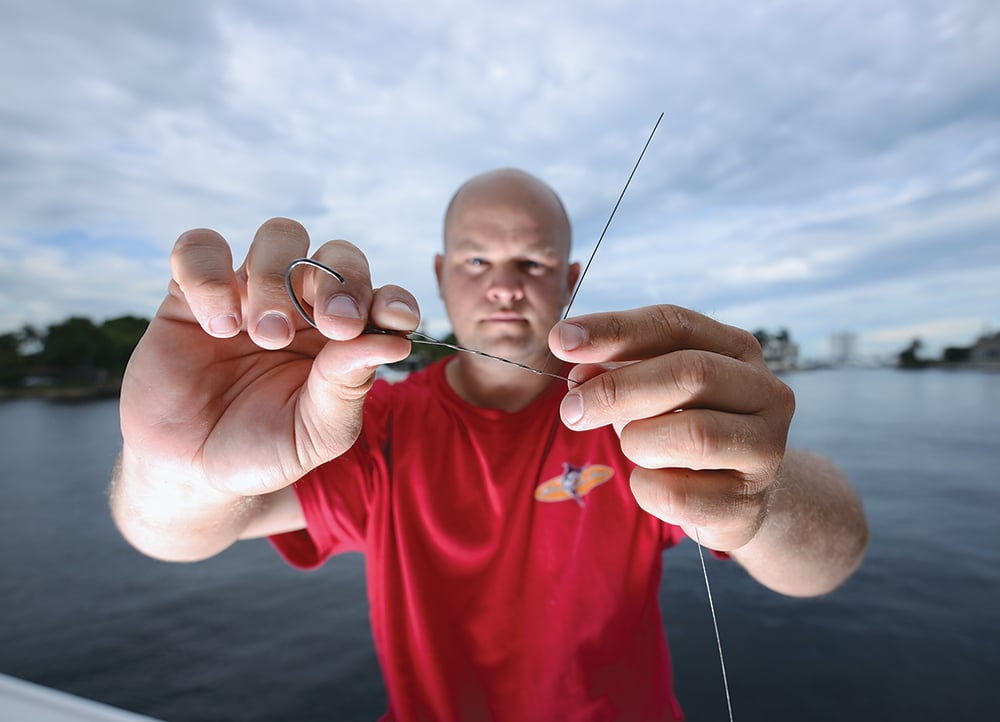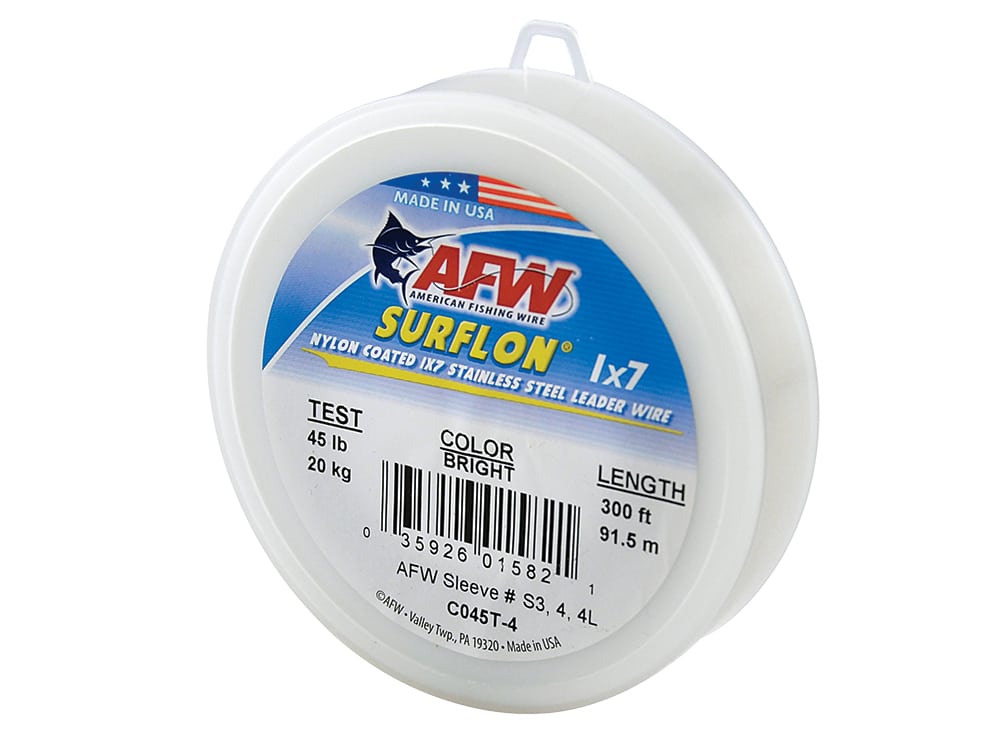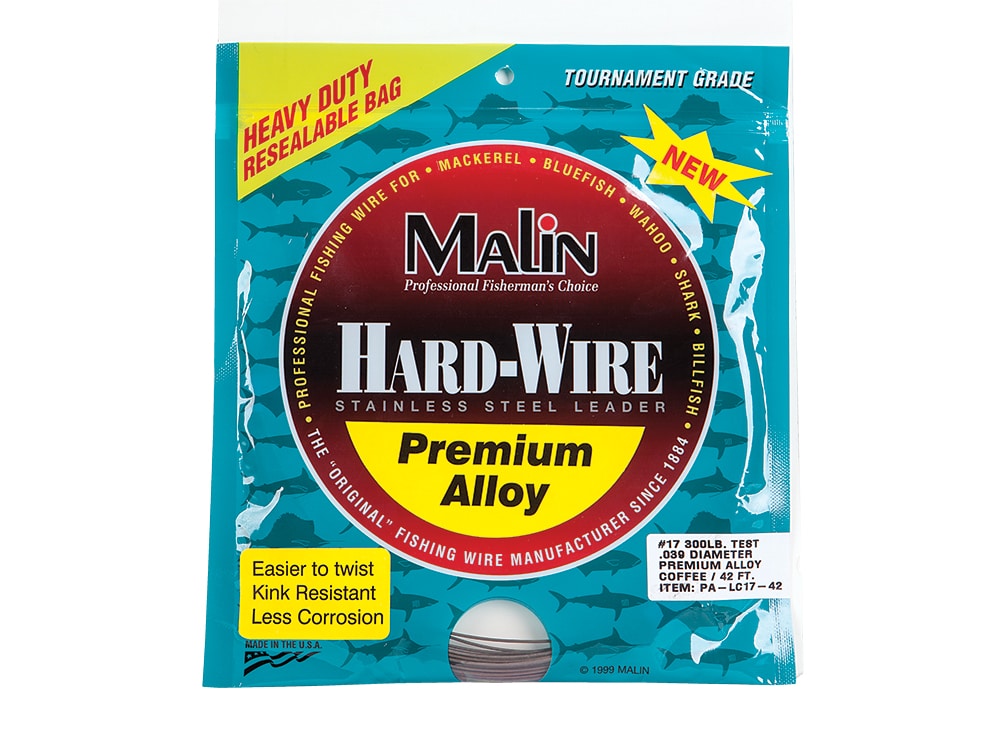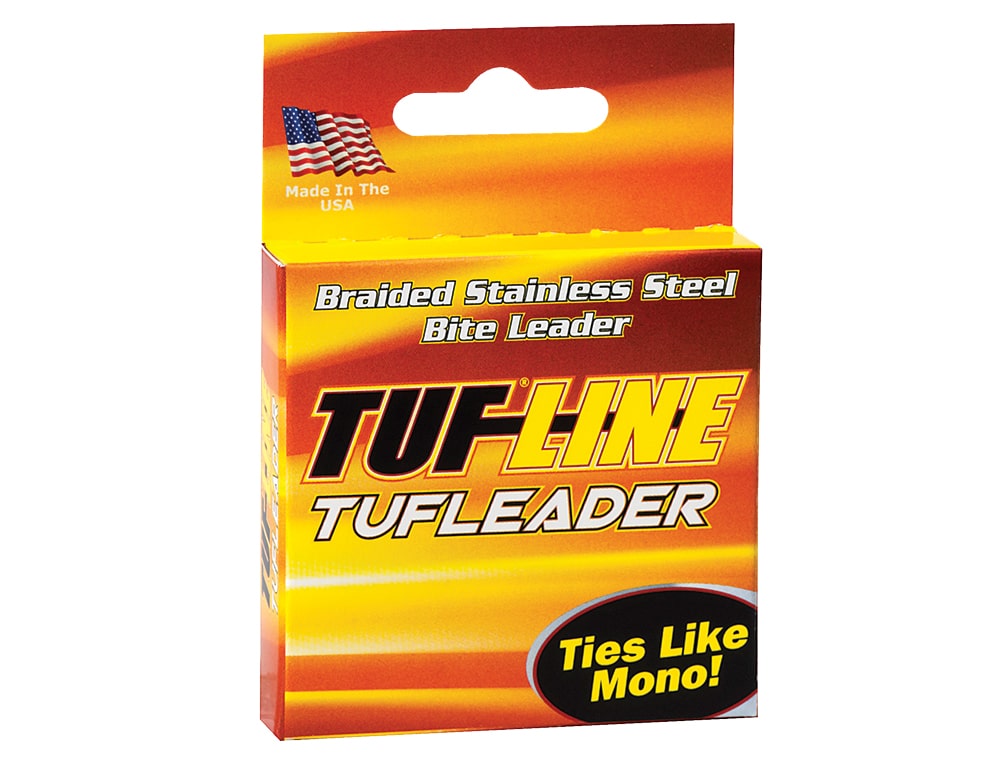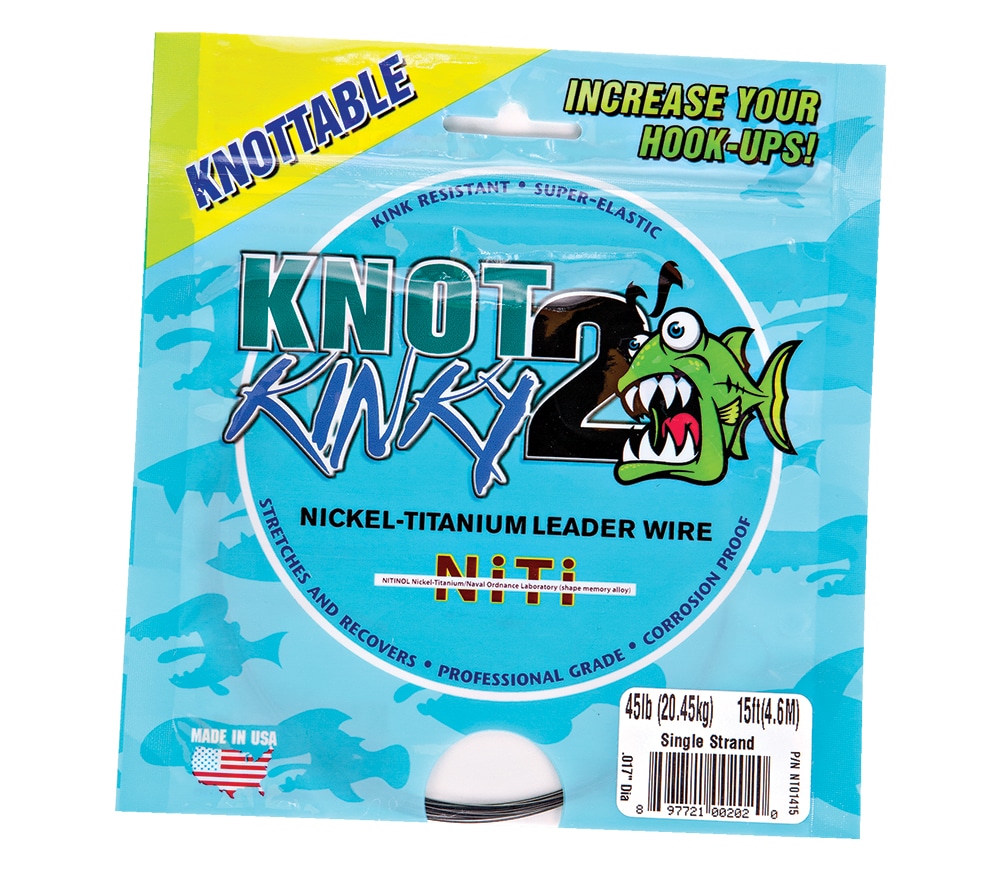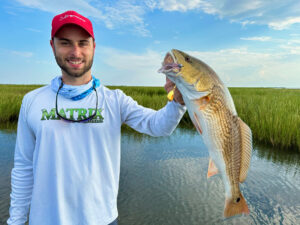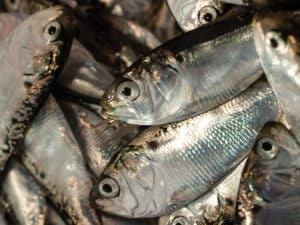Fishing off the Miami coast for the past 35 years, Capt. Dave Kostyo has rigged just about every leader imaginable. So it’s telling that he ties bronze-colored single-strand wire each time he hits the water for toothy targets.
“I’ll tie 2 feet of No. 3 or 4 stainless-steel leader to two arms’ lengths worth of 50-pound mono,” says Kostyo. “I use an Albright to the mono leader and a haywire twist to a J hook. I’m mostly drifting and live-baiting along the reef, so this rig allows me to catch just about everything — kingfish, sailfish, blackfin tuna, even wahoo.”
For some fishermen like Kostyo, single-strand stainless-steel wire leaders just work — they’re tried-and-true, inexpensive and a top choice to tie in bulk. For the rest of us, manufacturers offer wire leaders made with different materials, in different colors, and in various strengths and flexibilities. It’s up to you to decide what works best for your style of fishing and target species.
Get Twisted
Are you tired of wrapping lousy haywire twists? Then consider nickel-titanium leaders as a rigging option. Numerous manufacturers such as Malin, American Fishing Wire, Aquateko, TyGer and Terminator produce their own tie-able titanium-alloy leaders. Each company offers numerous line classes to handle most fish species.
“The leader goes through one heck of a manufacturing process but comes out able to be tied with simple knots,” says Keith Kessler, owner of Aquateko, and producer of Knot 2 Kinky leaders. “Getting the right mixture of titanium and nickel alloy during the manufacturing process is tricky — the two metals can be tough to work with.”
The nickel-titanium blend does not rust — it doesn’t kink either. Maybe that’s why anglers sore from retying snarled single-strand leaders find it so inviting. It actually stretches when tying a perfection loop, clinch or other basic knots.
“Even though it costs more than stainless steel,” says Kessler, “nickel titanium lasts longer, allowing you to catch more fish before having to retie. You can fish it for most species, but remember we offer only up to 100-pound-test.”
Western Filament produces a stainless-steel leader designed for easy knot tying called Tuf-Line Tuf Leader. Varying from 10- to 100-pound-test, this less-expensive option is actually stainless steel wrapped around a braided core.
“It’s a Spectra fiber core inside, with braided T-304 extruded stainless steel around the outside,” says Ted Thibault, sales manager at Tuf-Line. “The leader was engineered and designed for toothy fish. It’s a flexible, tie-able bite leader that doesn’t kill the action of the bait.”
One drawback to tie-able wire is that the knots don’t always look sexy, even if they consistently test solid. Joe Marshall, head of product testing at Malin, explains that anglers should tighten knots tied with Malin’s titanium leaders only until they feel stretch.
“It’s very flexible and can actually become brittle,” says Marshall, “so don’t force it too tight.”
Heavy Metal
A popular way to bypass tying or twisting wire is to crimp loops into the leader via copper or brass sleeves. The loop generated from the crimped sleeve allows live baits and lures to swim naturally, similar to a loop knot tied in fluorocarbon.
One leader that always needs crimp connections is heavy-duty multistrand cable. Because of its strength and rigidity, it’s often the best option when targeting truly heavyweight species.
“For shark fishing and big wahoo, you have to go with the 49-strand cable,” says Steve Carpenter, a sales executive at American Fishing Wire. “The way sharks fight and twist around the leader, 49-strand is best at resisting kinks and breaks.”
Cable is usually packaged as 7-strand or 49-strand. As the name implies, 7-strand is assembled from seven individual wires twisted together. Multiply that, and American Fishing Wire’s 49 Strand is made up of seven T-304 stainless-steel 7-strands.
“Cable gives you more flexibility with live baits,” agrees Marshall. “Shark fishing is getting more popular, with bigger fish available near shore. Because sharks have the ability to detect electrical currents in the water, some fishermen use nylon-coated wire.”
To describe proper crimping techniques for cable would require its own column. Still, remember these tips: Match the right-size sleeve to the appropriate-diameter line; include a thimble inside the loop to keep the loop’s shape under pressure; and make a solid connection by not crimping the edges of the sleeve. Proper sleeve sizes for specific leader diameters are listed on the package or on the manufacturer’s website.
Stainless Steel Reborn

Manufacturers continue to improve on stainless-steel leaders as they adjust to feedback from anglers. For Malin, that meant introducing Premium Alloy Hard-Wire at this year’s ICAST fishing-tackle-industry trade show. Made from 316L stainless steel, Premium contains higher nickel content for a more pliable feel, plus increased corrosion protection against salty conditions. The different grade of stainless steel is also less likely to kink, though don’t plan on bends and twists going away completely.
“Kingfishermen wanted leaders that were going to last in the salt, stored on the boat,” says Marshall. “That’s why we introduced the Premium Alloy. It’s slightly softer, and it won’t stain or mark the boat.”
And what about anglers who want to use multistrand leaders without having to use sleeves and crimps? American Fishing Wire produces two lines of stainless-steel leader — Surflon and Surfstrand — to give anglers less-kink options when targeting bluefish, mackerel, flounder, stripers and other species.
Available in 7-, 19- (Micro Ultra) and 49-strands (Micro Supreme), it’s your choice how pliable a leader you want to tie — the higher the strand count, the more threadlike the leaders become. Surflon Micro Supreme is so flexible, and has such little memory or stretch, that anglers can tie common monofilament knots like the nail, surgeon’s loop or uni with ease.
“Surflon’s nylon-coated for added protection, plus it’s an extra barrier from fish teeth, and easier on your hands,” says Carpenter. “Surfstrand’s uncoated, so it’s a bit easier to handle.”
When it comes to tying wire leaders, Carpenter is right: It’s all about what you can handle. Prices vary according to leader material, but it pays to rig comfortably.
